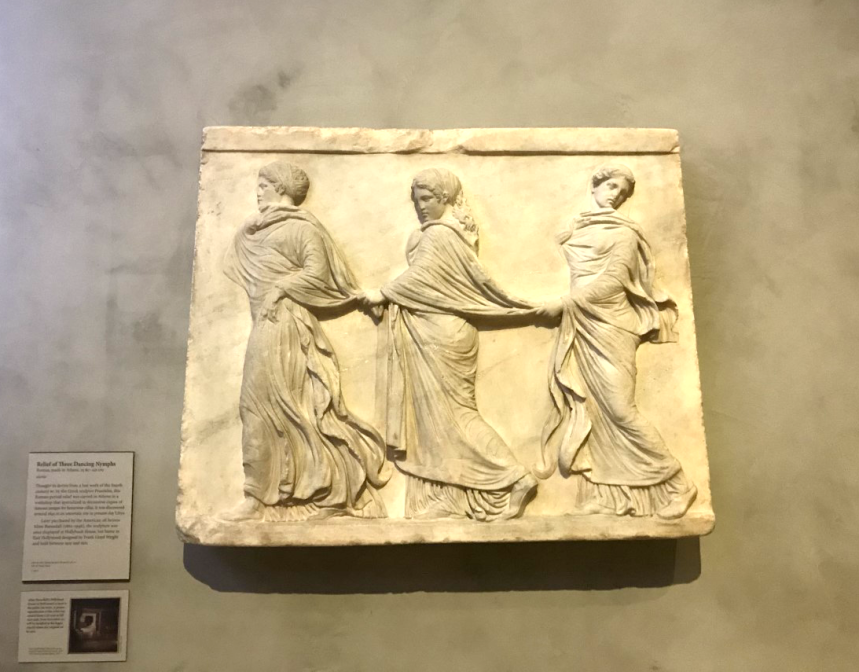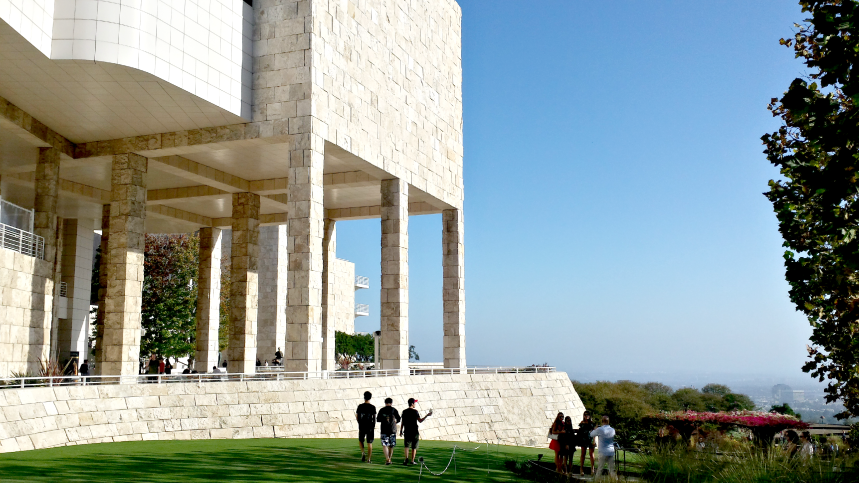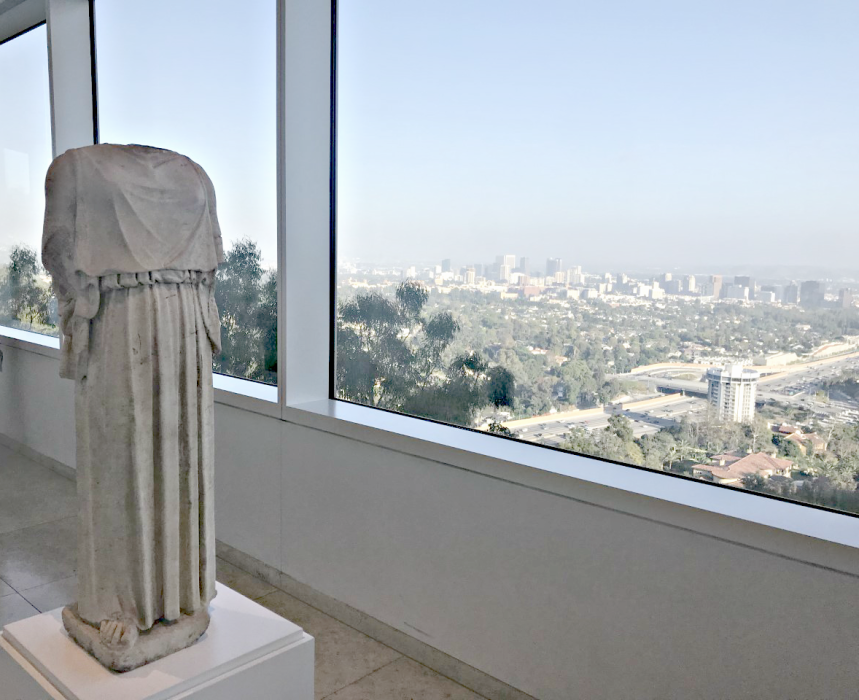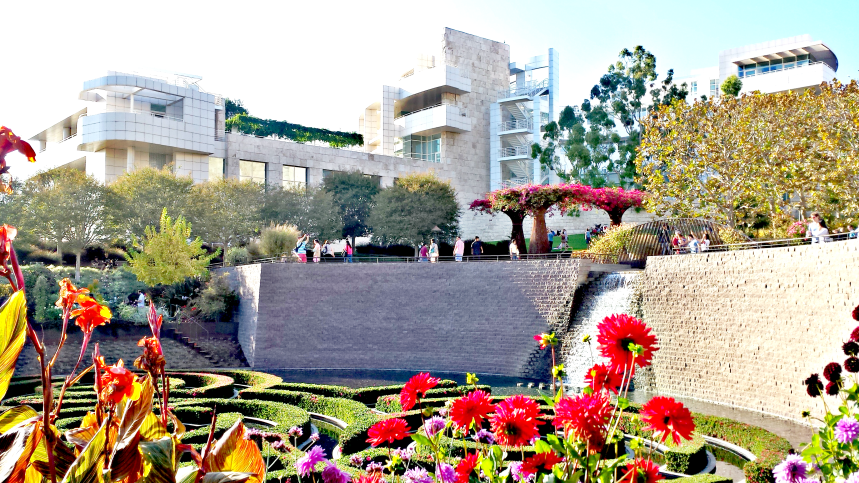In his book, Religion for Atheists, Alain de Botton stresses the necessity for atheists and agnostics to learn from religion–to adopt that which is relevant and precious in the faiths, thereby enriching our own lives. From this philosophy blooms the intense need for museums as a place for that which relieves and consoles the soul. “Art has a healing function,” says de Botton, and museums should be structured so as to exploit this postive function, rather than displaying art in a purely academic manner. If museums serve as secular churches, then “our new cathedrals are underperforming,” he says.
This is not the case with the Getty Center, which Eshaan and I visited recently over the weekend. Built into the chaparral-carpeted Santa Monica Mountains, the J. Paul Getty Museum and Getty Research Institute graciously float aloft above the hazy urban landscape. A modern-day Acropolis, the white travertine stones of the museum seem an outgrowth of the hilltop and nature, almost fading into the clouds. There is something remarkably contemporary but ancient about Richard Meier’s highly humane architecture: perhaps the word I am looking for is classic. As you load the tram that takes you from the parking lot, up a winding track to the top of the hill, you watch the cars on the freeway blend into cords of white and red lights; the city becomes a meadow of mushroom-sized homes, lights twinkling like the light that catches on insects’ wings, and the high-rises so dominating when you gaze up at them from the street seem about the size of a pebble. There is the sense that you are leaving behind the frenzy of daily life, taking a Sabbath from the chaos of modernity, and returning to some more human, and yet elevated, place.


The Getty welcomes you. Unlike some museums and parks, cluttered with peeling sandwich board notices and directions, and crude metal signs banning this or that, there are very few signs at the Getty. There is a symbol for the tram, the bathroom, the cafe, and a designated smoking area. Banners hang from a wall announcing the latest exhibit. The entry is a wide, welcoming courtyard with broad steps leading up to the main building. Everywhere, there is open space and open views.

Above: view from the Getty.
Inside, large windows let the sunlight pour in, and you don’t know where to look first: the views or the art. Countless enormous skylights make the museum feel sheltered from the elements, yet open to them. This sacred hilltop has been carved into a haven for fragile human creatures, and yet encourages them to participate in the world around them, the world that was–and the world that might be.

It is perfectly fitting, then, that the museum is a home not only for the soul, but for the mind: the Getty Research Institute, integrated with the museum, is a research library and center, and equally beautiful. A circular structure with stair ramps winding up and down between levels, it lets visitors glimpse a few exhibits and peek out at the library and its private gardens–a scholars-only retreat for intensive study and a tourist-free outdoor space where the mind can rest.
After the research institute, the museum buildings fork, and in the space between lie gardens, fountains, and waterfalls. An almost maze-like path, canopied by trees, descends through the bowl-shaped garden, taking you on a tour of roses, sage, and countless flowers bursting in color. If only there were more places to sit–after walking through the garden, I wanted to take a seat within the foliage and absorb the beauty and stillness of the garden, strangely unshattered by the presence of so many tourists.

Inside, the art collections range from ancient to modern, but my favorites were the illuminated manuscripts, stained glass windows, and classical sculptures. The sculptures especially felt at home, frozen in time and gracious postures with the landscape pouring in behind them. In other parts of the museum, you step back in time, walk from room to room fully furnished as some 18th-century nobleman’s home. And, of course, you will find the treasured pieces every great museum boasts almost without needing to mention: Van Gogh, Rembrandt, Manet, Goya, Cézanne.


Eshaan and I left the museum at closing, that beautiful hour just shy of sundown. The turpentine stone glowed white, Los Angeles dreamed in a haze, and despite the exodus to the tram station, it could not have been more peaceful. The descent down the mountain left us feeling relieved, renewed, and hopeful. “Now this is the kind of place where I want to live and work,” said Eshaan. I couldn’t agree more.
